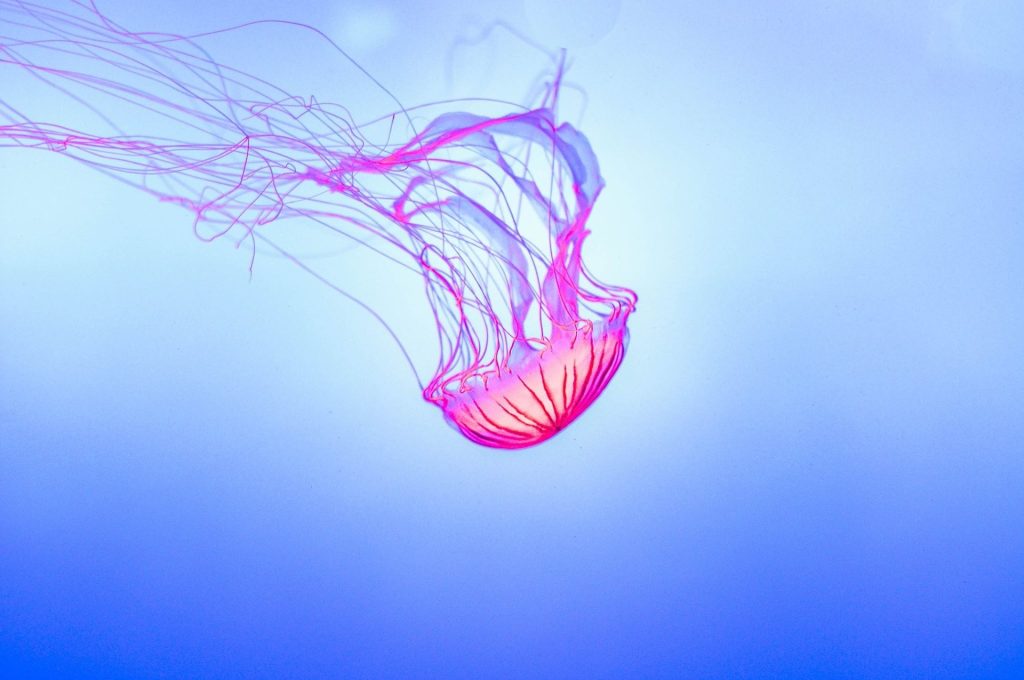Why Strange Jellyfish Are Washing Up All Over Texas Shores
A large number of two types of jellyfish, the Blue Button and the Portuguese Man O’ War jellyfish, have arrived on the Texas Coast due to strong ocean currents.
This article is more than 2 years old

If you are heading to the beach this weekend or over the next few weeks, then there is a new type of jellyfish that you should watch out for. According to many reports, a large number of two types of jellyfish, the Blue Button and the Portuguese Man O’ War jellyfish, have arrived on the Texas Coast.
The Blue Button jellyfish is well-known species of jellyfish. The Portuguese Man O’ War is not. It is mistakenly assumed that it is a jelly fish by beachgoers and onlookers; it is actually a sea animal known as a siphonophore. Siphonophore is a group of animals that look like jellyfish but are another species in their own right.
These jellyfish look-a-likes are found mostly in tropical environments. They can be pushed through thousands of miles of oceans by wind and ocean currents. They can travel in huge packs of over 1,000 Man O’ War or more, kind of like an army.
The Blue Button, also known as Porpita porpita, is similar to the Man O’ War jellyfish look-a-likes, but fortunately for beachgoers, these do not carry a painful sting. While they do not have any stings, both types of sea animals should be avoided as best you can.
When a Portuguese Man O’ War siphonophore does sting, it will leave a painful and irritated mark on its victim. This pain and irritation are caused by little cells within the animal triggering and shooting little venom darts into its victim. Thousands of these little darts can enter your skin during an encounter with these animals, so please be careful if you come across them.
If you are on the Texas coast over the next few weeks and think that you may have encountered one of these sea animals, there are several things you can do to ensure your safety and the safety of others.
If they have been located within the water, either leave the sea immediately or move a considerable distance away from them. As jellyfish usually move in large packs, it may be better to retreat to the coast, especially if you have small children.
If they have been located on the beach, stay well away as even though they have begun the drying out process, their sting can still cause pain ad irritation for a long time after they have been removed from the water.
If you are stung by any jellyfish, please do not panic.While their sting may hurt a lot, it cannot kill you. The venom that jellyfish possess is actually used to paralyze fish and other creatures, not humans.
You do not even have to go to the hospital to treat your sting. Everything you need should be in your kitchen cupboard. Mix vinegar and meat tenderizer and put it onto the sting. The acid within the vinegar should neutralize the poison.
Jellyfish can be cool to see in the water, but if anyone has seen that iconic episode of Friends, no one wants to end a lovely day out like that, so keep your distance and just admire them from afar.




